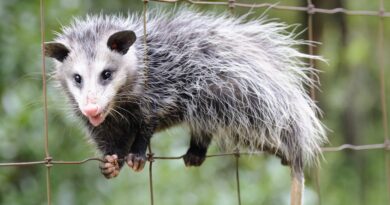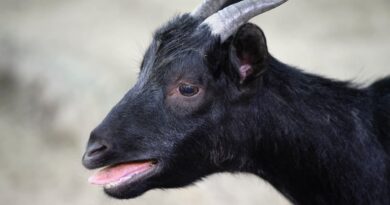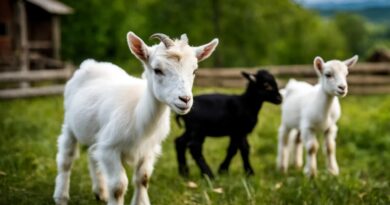Can Monkeys Eat Chocolate? Understanding the Risks and Benefits
Monkeys are fascinating creatures that closely resemble humans in many aspects, from their intelligence to their dietary habits. This resemblance often leads people to wonder whether foods enjoyed by humans, such as chocolate, are safe for monkeys. While chocolate is a popular treat for humans, its effects on non-human primates require closer examination. This article dives deep into the topic of monkeys and chocolate, exploring the risks, potential benefits, and key considerations for their health and well-being.
Understanding a Monkey’s Natural Diet
What Do Monkeys Typically Eat?
Monkeys are omnivorous creatures, and their diets primarily consist of fruits, leaves, seeds, nuts, and, in some cases, small insects or animals. Depending on the species, some monkeys may have a preference for certain types of food. For example:
- Spider monkeys mainly consume fruits and leaves.
- Capuchin monkeys are known for their adaptability and can eat a wide variety of foods, including nuts and small prey.
- Baboons often have diverse diets that include roots, seeds, and even scavenged human food.
Nutritional Needs of Monkeys
The natural diet of monkeys is rich in essential nutrients such as:
- Carbohydrates: Found in fruits and roots.
- Proteins: Derived from seeds, insects, or small animals.
- Fiber: Found in leaves and plant material, which aids digestion.
- Vitamins and Minerals: Necessary for growth, immunity, and overall health.
Because of these specific dietary needs, introducing unfamiliar foods like chocolate may disrupt their natural nutrition.
The Composition of Chocolate
Ingredients in Chocolate
- Chocolate is made from cacao beans and contains various ingredients, including:
Theobromine and Caffeine: These are natural stimulants. Theobromine, in particular, is toxic to many animals. - Sugar: Present in significant quantities in most commercial chocolates, posing risks of obesity and diabetes.
- Fats: Often added to enhance flavor but can lead to weight gain in animals.
- Milk Solids: Found in milk chocolate, which may not be easily digestible by animals.
Types of Chocolate
- Dark Chocolate: Contains a higher concentration of cacao and theobromine.
- Milk Chocolate: Less cacao but higher in sugar and fat.
- White Chocolate: Minimal cacao content but rich in sugar and fats.
Each type poses different levels of risk, with dark chocolate being the most dangerous due to its theobromine content.
Risks of Chocolate for Monkeys
Toxicity of Theobromine and Caffeine
Theobromine is a key concern when feeding chocolate to animals. While humans metabolize theobromine relatively quickly, monkeys, like many other animals, have slower metabolic rates for this compound. This can lead to:
- Heart Problems: Increased heart rate or arrhythmia.
- Nervous System Issues: Restlessness, muscle tremors, or seizures.
- Kidney Damage: In severe cases, kidney failure can occur.
Sugar Overload
Excessive sugar in chocolate can:
- Disrupt a monkey’s blood sugar levels.
- Lead to obesity and diabetes with prolonged exposure.
Digestive Problems
Monkeys are not equipped to process the artificial additives and milk solids in chocolate. This can result in:
- Diarrhea: Caused by lactose intolerance or sugar overload.
- Vomiting: As the body tries to reject harmful substances.
Behavioral Changes
Sugary treats like chocolate can cause hyperactivity or even aggression in monkeys, similar to a “sugar rush” observed in children.
Potential Benefits of Chocolate for Monkeys
While chocolate is not suitable for monkeys, there is curiosity about its potential benefits in controlled environments.
Antioxidant Properties
Dark chocolate contains flavonoids, which are antioxidants that may:
- Combat oxidative stress.
- Support brain function and memory.
However, these benefits are outweighed by the risks of theobromine toxicity.
Behavioral Enrichment
In research or zoo settings, providing highly controlled amounts of chocolate as a rare treat may:
- Serve as positive reinforcement for training.
- Stimulate cognitive problem-solving when paired with food puzzles.
Despite these controlled benefits, chocolate should never replace a monkey’s natural diet.
Case Studies: Monkeys and Chocolate
Incident Reports
Several documented cases highlight the dangers of chocolate consumption in monkeys:
- Accidental Chocolate Ingestion: In a zoo in Southeast Asia, a visitor fed chocolate to a macaque, resulting in severe vomiting and hospitalization for the animal.
- Controlled Study: In a research setting, small doses of dark chocolate were administered to study its effects on primate cognition. While no immediate harm was observed, long-term effects were inconclusive.
Alternative Treats for Monkeys
Safe and Nutritious Options
Instead of chocolate, monkeys can enjoy a variety of safe treats, such as:
- Fruits: Bananas, apples, and mangoes are favorites.
- Vegetables: Carrots, cucumbers, and leafy greens.
- Nuts and Seeds: Rich in natural fats and proteins.
Enrichment Foods
For behavioral stimulation, zoos and sanctuaries often provide:
- Frozen Fruit Popsicles: A refreshing and safe alternative.
- Food Puzzle Toys: Filled with nuts or seeds to encourage natural foraging behaviors.
Guidelines for Feeding Monkeys
For Pet Owners
If you have a pet monkey (where legal), it is essential to:
- Stick to a diet recommended by veterinarians.
- Avoid human junk food, including chocolate.
- Provide plenty of fresh water and a balanced diet.
In Zoos and Sanctuaries
Professional caretakers must ensure that:
- Monkeys are not exposed to harmful human foods.
- Visitors are educated on the dangers of feeding unauthorized treats to animals.
Can Monkeys Be Trained to Avoid Chocolate?
The Role of Conditioning
Through positive reinforcement, monkeys can be trained to avoid harmful foods like chocolate. For example:
- Using food rewards like fruits to encourage desired behaviors.
- Introducing training sessions to recognize and reject specific harmful items.
Public Awareness Campaigns
Zoos and wildlife centers often run campaigns to educate the public about the dangers of feeding human food to animals, including chocolate.
Why Chocolate Is a No-Go for Monkeys
While chocolate may seem harmless or even a special treat, it poses significant risks to the health and well-being of monkeys. From the toxicity of theobromine to the adverse effects of sugar and fat, the dangers far outweigh any potential benefits. Providing safe, species-appropriate foods is crucial for their physical and mental health.
Conclusion
Monkeys, as fascinating and intelligent creatures, deserve diets tailored to their unique needs. Chocolate, despite being a beloved human indulgence, has no place in a monkey’s diet. By understanding the risks and making informed choices, we can ensure the health and happiness of these incredible animals.




